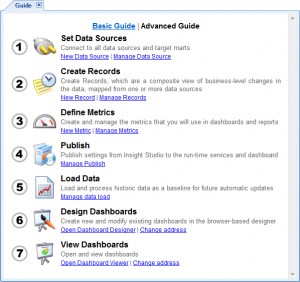A friend of mine recently asked why I am even still interested in enterprise computing when all the innovation is happening within the consumer electronics sector. Smartphones, tablet computers, e-book readers, and audio streaming devices have changed the way we live our daily lives. Now that I read the NYTimes on my iPad, I get through a substantially larger part of the newspaper, compared to when I was reading the paper edition. Now that I use "Read it Later," I finally get to actually read all the interesting website articles that I bookmark during my workday, while relaxing in the evening on the couch with my iPad. Since I have Rhapsody on my iPhone, I get to actually listen to my favorite rare albums while driving to work. My Squeezebox streaming music players on my nightstand and in my living room allow me to listen to my favorite global radio stations, or I can create my own custom channels, by entering a number of my favorite bands. My home alarm system is controlled through an online dashboard or an iPad/iPhone app, so that I can turn off specific motion sensors or the entire system remotely.
I could go on and on about consumer tech. But now let's take a look at what's going on within enterprise IT. While we often find whole areas of enterprise IT dominated by traditional large vendors, we can also see a myriad of highly innovative startups looking at traditional IT challenges from a brand new perspective:
Self-service cloud: Abiquo, Embotics, iWave, Nimbula, DynamicOps, Egenera
Delivering servers, network resources, and storage to the end-user in a self-service manner is a paradigm change. All of a sudden, line of business users can create the infrastructure they need, while the cloud automation software enforces compliance and chargeback. As a result, new software technologies can be evaluated and implemented much more easily than during times when the end-user had to go through a maze of IT requests.
Virtualized and virtualization-aware storage: Virsto, Nexgen, Tintri, DataCore, Atlantis Computing, Nexenta, Nimble Storage
These storage solutions all aim at eliminating storage as the main virtualization and cloud bottleneck, by automating the initial provisioning process, as well as SLA management. In short, all seven vendors dramatically reduce the time and effort it takes to provision IT infrastructure.
Workload automation: Terma Software Labs, UC4 Software, Redwood
It is hard to explain to outsiders why workload automation is exciting. However, these three companies all have one thing in common: they simplify workload automation through the use of predictive analytics. Predictive analytics are used to automatically and dynamically monitor critical path performance and the impact of external events on the system's ability to adhere to the SLA. Not having to set and maintain hundreds or even thousands of individual performance thresholds qualifies as significant progress within the workload automation arena.
Workspaces instead of static desktops: RES Software, Quest Software, Ericom
These three companies introduced the concept of dynamic workspaces to the enterprise, eliminating some of the core problems of desktop virtualization: performance, management, and storage cost. The concept of workspaces instead of static desktops will take some time to catch on, but as soon as enterprises and end-users truly understand the advantages, we should see significant productivity gains and cost savings.
The above examples show that innovation does exist within enterprise IT. The difference to consumer IT, however, is that being among the early adopters of a new technology brings significant risk for the CIO. Choosing a more conservative approach often is better for job security, but leaves opportunities presented by new technologies untapped. It is much safer for an end-user to spend $500 on an iPad than it is for an IT organization to invest in, for example, policy-based automated storage provisioning.
All that said, while enterprise IT is moving slower than consumer electronics, there still is innovation and the excitement that comes with it. The thrill of implementing a new technology paradigm, like desktop workspaces or self-service cloud, and saving the organization several million dollars per year, while making end-users wonder how they ever lived without their follow-me workspace and cloud service catalog, is tremendous. While I love talking about my latest iPad app discoveries, I get a bigger thrill out of analyzing the tremendous ROIs brought by enterprise IT innovations.




